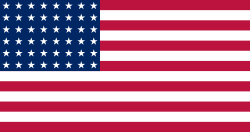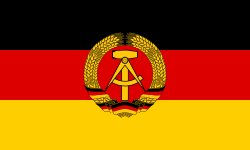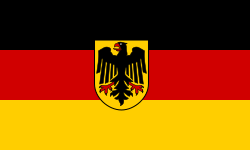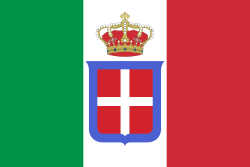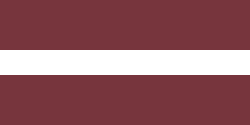André Lange
| André Lange | |
|---|---|
 | |
| Narození | 28. června 1973 (51 let) Ilmenau |
| Bydliště | Suhl |
| Povolání | bobista |
| Choť | Ariane Friedrichová |
| Některá data mohou pocházet z datové položky. | |
| Přehled medailí | ||
|---|---|---|
| zlato | ZOH 2006 | dvojbob |
| zlato | ZOH 2010 | dvojbob |
| zlato | ZOH 2002 | čtyřbob |
| zlato | ZOH 2006 | čtyřbob |
| stříbro | ZOH 2010 | čtyřbob |
| Mistrovství světa v jízdě na bobech | ||
| zlato | MS 2003 | dvojbob |
| zlato | MS 2007 | dvojbob |
| zlato | MS 2008 | dvojbob |
| zlato | MS 2000 | čtyřbob |
| zlato | MS 2003 | čtyřbob |
| zlato | MS 2004 | čtyřbob |
| zlato | MS 2005 | čtyřbob |
| zlato | MS 2008 | čtyřbob |
André Lange (* 28. června 1973 Ilmenau) je bývalý německý bobista. Narodil se v NDR, reprezentoval již sjednocené Německo. Je držitelem čtyř zlatých olympijských medailí, dvou ze čtyřbobu (Salt Lake City 2002, Turín 2006) a dvou z dvoubobu (Turín 2006, Vancouver 2010). Krom toho má stříbro ze čtyřbobu, z Vancouveru.[1] Je též osminásobným mistrem světa a devítinásobným mistrem Evropy. Začínal jako sáňkař, na boby přesedla v roce 1993. Na olympijských hrách ve Vancouveru roku 2010 byl vlajkonošem německé výpravy.
Odkazy
Reference
- ↑ Archivovaná kopie. www.sports-reference.com [online]. [cit. 2020-03-19]. Dostupné v archivu pořízeném z originálu.
V tomto článku byl použit překlad textu z článku André Lange na anglické Wikipedii.
Externí odkazy
 Obrázky, zvuky či videa k tématu André Lange na Wikimedia Commons
Obrázky, zvuky či videa k tématu André Lange na Wikimedia Commons - Bobsleigh four-man Olympic medalists for 1924, 1932–56, and since 1964
- Bobsleigh two-man world championship medalists since 1931
- Bobsleigh four-man world championship medalists since 1930
- List of combined men's bobsleigh World Cup champions: 1985–2007
- List of four-man bobsleigh World Cup champions since 1985
- List of two-man bobsleigh World Cup champions since 1985
- André Lange v databázi Olympedia (anglicky)
Média použitá na této stránce
Olympic Rings without "rims" (gaps between the rings), As used, eg. in the logos of the 2008 and 2016 Olympics. The colour scheme applied here was specified in 2023 guidelines.
Olympic Rings without "rims" (gaps between the rings), As used, eg. in the logos of the 2008 and 2016 Olympics. The colour scheme applied here was specified in 2023 guidelines.
US Flag with 48 stars. In use for 47 years from July 4, 1912, to July 3, 1959.
The Canadian Red Ensign, the national flag of Canada from 1957 to 1965. (see: the Canadian Red Ensign on the Register of Arms, Flags and Badges)
National flag and merchant ensign of Germany from 1933 to 1935.
National flag and merchant ensign of Germany from 1933 to 1935.
This is the national flag of Belgium, according to the Official Guide to Belgian Protocol. It has a 13:15 aspect ratio, though it is rarely seen in this ratio.
Its colours are defined as Pantone black, Pantone yellow 115, and Pantone red 032; also given as CMYK 0,0,0,100; 0,8.5,79,0; and 0,94,87,0.Bundesdienstflagge (Flag of the federal authorities of Germany). Under German law, federal states, municipalities, institutions or private persons are not allowed to use this flag.
Flag of Canada introduced in 1965, using Pantone colors. This design replaced the Canadian Red Ensign design.
Autor: F l a n k e r, Licence: CC BY-SA 2.5
Při zobrazení tohoto souboru lze snadno přidat orámování
The Canadian Red Ensign, the national flag of Canada from 1957 to 1965. (see: the Canadian Red Ensign on the Register of Arms, Flags and Badges)
Bobsled team members from Germany-2 (orange and white), USA-1, (center row in blue) and USA-2 wave to the crowd after receiving their newly awarded medals during a ceremony in Salt Lake City for the men's four-man bobsled event in the 2002 WINTER OLYMPIC GAMES. Here cropped: André Lange/Germany

